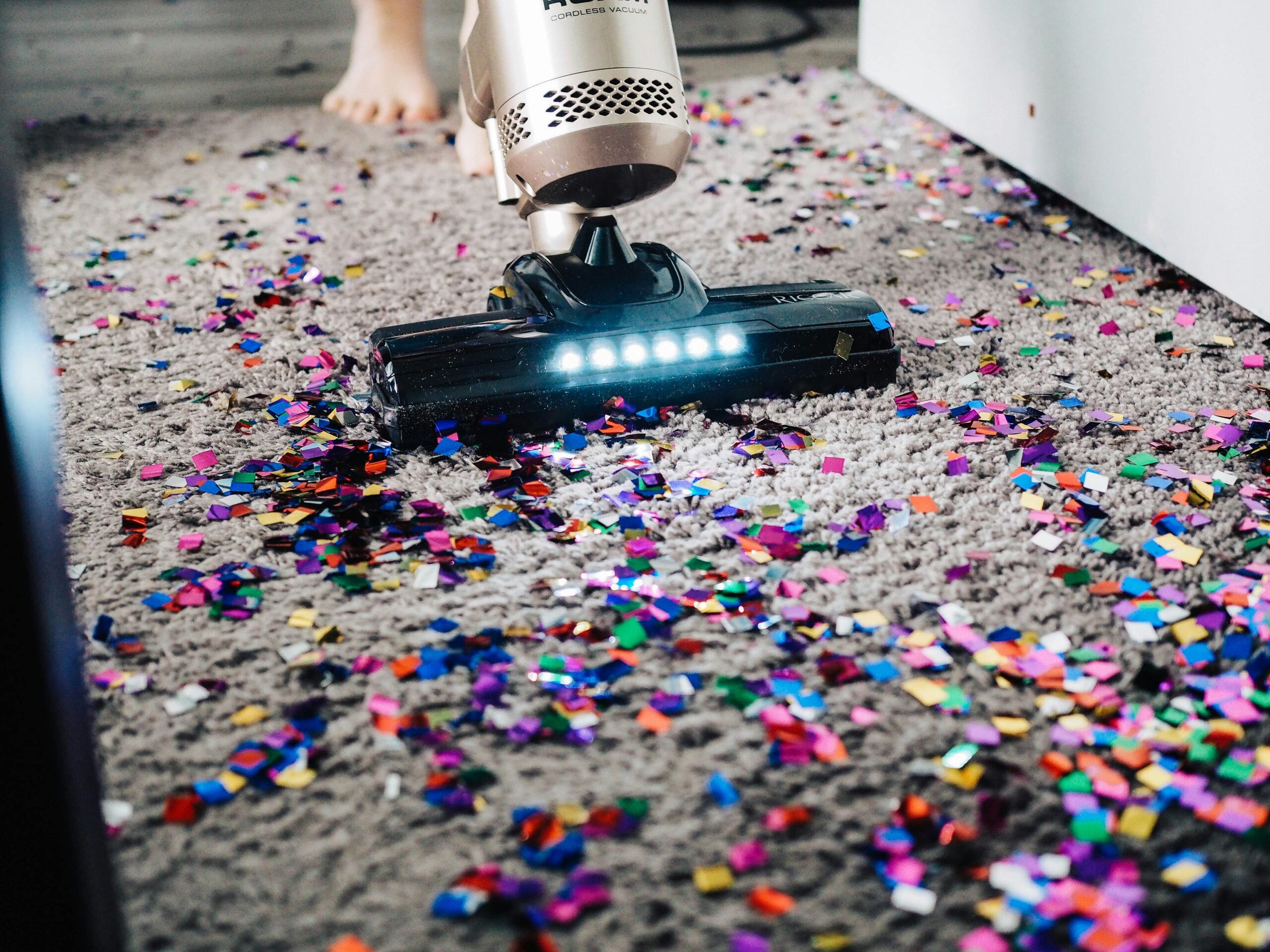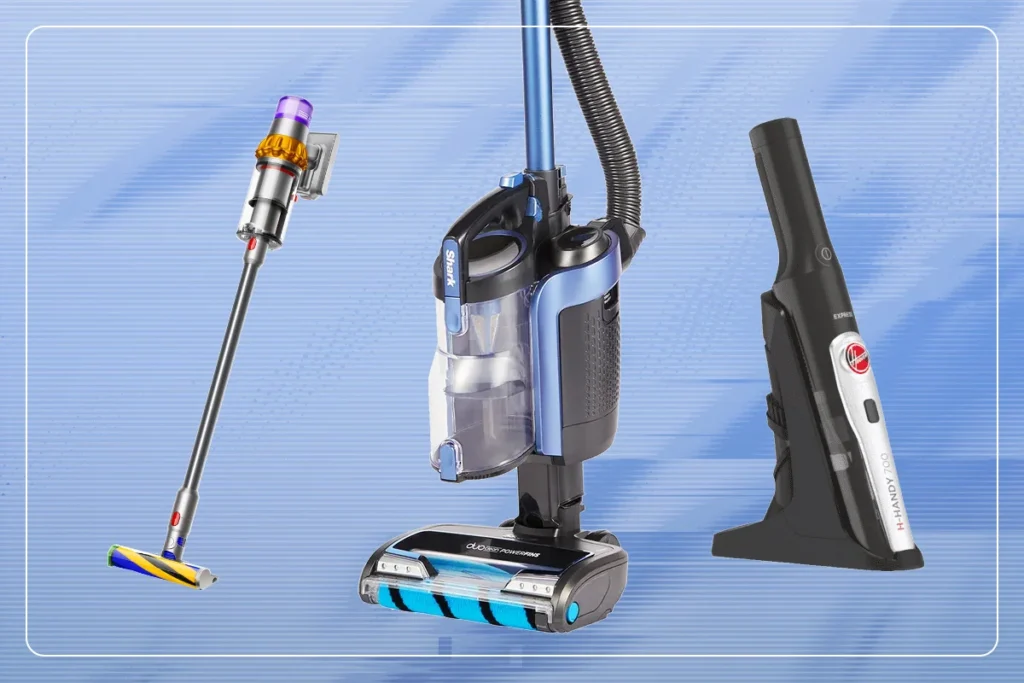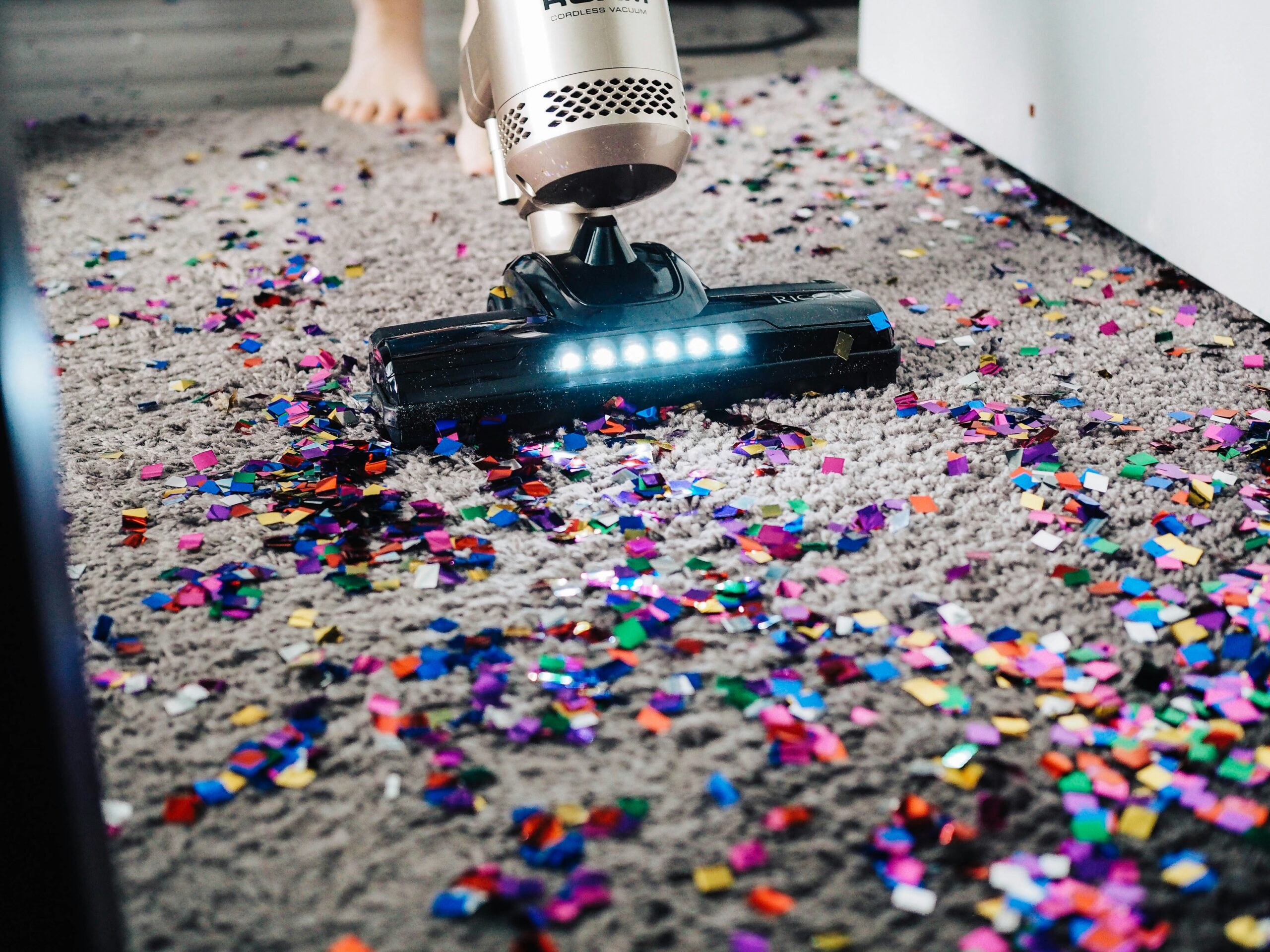
Introduction to Cordless and Corded Vacuums
The evolution of vacuum cleaners has seen significant strides from their inception to the present day. Among the most notable advancements are the developments in cordless and corded vacuum technologies. Both types of vacuums serve the fundamental purpose of cleaning, yet they differ considerably in design, power source, and intended use.
Corded vacuums have long been the staple in household cleaning due to their steady and reliable power supply. These vacuums connect directly to an electrical outlet, ensuring consistent suction power throughout the cleaning process. They are typically designed for extensive and deep cleaning tasks, making them a preferred choice for homes with larger floor areas that require thorough cleaning.
In contrast, cordless vacuums operate using rechargeable batteries. This eliminates the need for a power cord, providing enhanced mobility and convenience. The portability of cordless vacuums makes them particularly appealing for quick clean-ups and reaching areas that are difficult to access with a corded vacuum. Recent advancements in battery technology have significantly improved the performance and battery life of cordless vacuums, contributing to their growing popularity.
As consumers increasingly seek convenience in their cleaning routines, the demand for cordless vacuums has surged. The ability to clean without the constraints of a power cord, combined with the compact and lightweight design, has made cordless vacuums an attractive option for many households. However, the decision between a cordless and corded vacuum often hinges on various factors such as cleaning requirements, floor type, and personal preferences.
This comprehensive comparison aims to delve deeper into the distinct features, advantages, and limitations of both cordless and corded vacuums. By exploring these aspects, readers will be better equipped to make an informed decision about which type of vacuum best suits their cleaning needs.
Performance and Suction Power
Corded vacuums have long been favored for their consistent and robust suction power, derived from a continuous electrical supply. This uninterrupted power flow ensures that corded models deliver reliable performance, especially in tackling stubborn debris and deeply embedded dirt in carpets. For example, the Dyson Ball Animal 2 boasts an impressive 306 AW (air watts) of suction power, making it highly effective on a variety of surfaces including carpets, hardwood floors, and tiles.
In contrast, cordless vacuums, while traditionally perceived as less potent, have made significant strides in recent years. Advances in battery technology have enabled modern cordless models to rival, and in some cases, even surpass the performance of their corded counterparts. High-capacity lithium-ion batteries, for instance, have been pivotal in this transformation. The Dyson V11 Torque Drive, a leading cordless model, delivers up to 185 AW of suction power and features intelligent sensors to optimize performance across different floor types.
When evaluating cleaning efficiency, it is essential to consider the practical implications of suction power on various surfaces. Corded vacuums, with their superior suction, excel at deep-cleaning thick carpets and removing pet hair. Their consistent power supply ensures that they can handle extensive cleaning tasks without a decline in performance. On the other hand, cordless vacuums offer unparalleled convenience and versatility, allowing users to easily maneuver around furniture and reach high or difficult spots. Models like the Shark ION F80 provide sufficient suction to effectively clean hard floors and area rugs, making them a versatile option for diverse cleaning needs.
In summary, while corded vacuums remain the benchmark for raw suction power and deep-cleaning capability, cordless vacuums have closed the gap significantly. The choice between the two ultimately hinges on one’s specific cleaning requirements and the importance placed on mobility and convenience versus power and endurance.
Battery Life and Charging
Cordless vacuums have become increasingly popular due to their enhanced mobility and the convenience of not being tethered to a power outlet. A critical aspect to consider when evaluating cordless vacuums is their battery life and charging requirements. Most modern cordless vacuums typically offer a battery life ranging from 20 to 60 minutes on a full charge, depending on the model and usage intensity. High-powered settings or using additional attachments can significantly reduce this runtime.
Recharging times for cordless vacuums vary, but on average, it takes about 3 to 5 hours to fully recharge a depleted battery. Some high-end models feature quick-charge technology, reducing this time considerably. However, even with these advancements, users must account for the potential downtime required for recharging. Over time, the battery’s capacity may degrade, leading to a reduced operational period between charges. This degradation is influenced by factors such as frequency of use, charging habits, and overall battery quality.
In contrast, corded vacuums offer the advantage of an unlimited runtime, as they are directly connected to a power source. This continuous power supply eliminates concerns about battery life and recharging interruptions. For users who require extended cleaning sessions or have larger areas to cover, this can be a significant benefit.
Despite the limitations related to battery life and charging, cordless vacuums provide unparalleled convenience in terms of mobility. The absence of a power cord allows for ease of movement, making it simpler to clean hard-to-reach areas and navigate around obstacles. This flexibility is particularly advantageous in multi-level homes or spaces with limited power outlets.
Ultimately, the decision between a corded and cordless vacuum will depend on individual needs and preferences. While cordless vacuums offer superior mobility and ease of use, the potential downtime due to battery recharging and the eventual degradation of battery life are important considerations.
Weight and Maneuverability
When evaluating the weight and maneuverability of cordless and corded vacuums, several key differences emerge that significantly impact user experience. Cordless vacuums are generally lighter, often weighing less than 10 pounds. This reduced weight makes them exceptionally easy to handle, especially for quick clean-ups and reaching tight spaces, such as under furniture or in between car seats. The absence of a power cord further enhances their maneuverability, allowing users to move freely without the constraint of finding a nearby outlet or dealing with tangled cords.
Corded vacuums, on the other hand, tend to be heavier and bulkier. This additional weight can be attributed to more powerful motors and larger dust containers, which are essential for maintaining high suction power and longer cleaning sessions without frequent emptying. While the heft of corded vacuums may make them more cumbersome to move around, their superior suction capabilities often make them the preferred choice for deep cleaning tasks, such as vacuuming carpets or large areas where more sustained power is required.
The difference in weight and maneuverability between these two types of vacuums has practical implications for everyday use. Users looking for convenience and ease of use may find cordless vacuums more appealing, especially for smaller living spaces or for those who need a vacuum that can quickly address minor messes. Their lightweight nature also makes them a suitable option for elderly users or individuals with physical limitations. Conversely, households with extensive carpeting or larger rooms may benefit more from the robust performance of a corded vacuum, despite the trade-off in maneuverability.
Ultimately, the choice between a cordless and corded vacuum depends on individual needs and preferences. Understanding the distinctions in weight and maneuverability can guide consumers in selecting the vacuum that best fits their lifestyle, ensuring that their cleaning tasks are as efficient and effortless as possible.
Versatility and Accessories
When evaluating the versatility and accessories of cordless and corded vacuums, it is essential to consider the range and utility of attachments that accompany each type. Cordless vacuums are often praised for their portability and ease of use, making them ideal for quick cleanups and reaching tight spaces. They typically come with a variety of specialized attachments, such as crevice tools, dusting brushes, and upholstery tools, specifically designed for handheld capabilities. These features make cordless vacuums particularly effective for car cleaning and other spot-cleaning tasks.
On the other hand, corded vacuums generally offer a more extensive array of accessories that cater to a broader spectrum of cleaning needs. Due to their consistent power supply, corded models can support more robust and varied attachments without compromising performance. This includes larger motorized brushes for deep carpet cleaning, heavy-duty crevice tools for extensive reach, and versatile dusting brushes for delicate surfaces. Additionally, corded vacuums often come with more advanced filtration systems, which can be a crucial factor for households with allergy sufferers or pets.
While cordless vacuums excel in versatility due to their lightweight and cordless nature, making them ideal for quick and spot cleanups, corded vacuums stand out for their comprehensive accessory options tailored for deep and thorough cleaning tasks. The choice between the two ultimately depends on the specific cleaning requirements and preferences of the user. Those needing a vacuum for frequent, smaller cleanups might find the cordless model more convenient, whereas individuals looking for a more powerful and thorough cleaning solution might prefer the accessory-rich corded vacuum.
Maintenance and Durability
When comparing the maintenance and durability of cordless and corded vacuums, several factors come into play, including filter replacement, dust container emptying, and overall longevity. Generally, corded vacuums are designed with larger dust containers and more robust components, contributing to less frequent maintenance requirements. Their sturdy design often translates to a longer lifespan, making them a reliable choice for long-term use. In contrast, cordless vacuums, while offering unparalleled convenience, typically require more frequent maintenance due to their compact size and more delicate build.
One of the primary maintenance tasks for both types of vacuums is filter replacement. Corded vacuums often feature larger, more durable filters that can capture a significant amount of dust and debris before necessitating a change. This means users can enjoy longer intervals between replacements, reducing overall maintenance efforts. On the other hand, cordless vacuums, designed to be lightweight and portable, usually come with smaller filters that need more frequent attention. Regularly cleaning or replacing these filters is crucial to maintain optimal performance and prolong the vacuum’s lifespan.
Dust container emptying is another critical aspect of vacuum maintenance. Corded models generally boast larger dust containers, allowing for extended cleaning sessions without the need for frequent emptying. This feature is particularly beneficial for larger households or extensive cleaning tasks. Conversely, the compact design of cordless vacuums means smaller dust containers that fill up quickly, requiring more frequent emptying. To ensure the vacuum operates efficiently, it’s essential to empty the dust container regularly and avoid overfilling.
To enhance the durability of both corded and cordless vacuums, users should follow a few best practices. For corded vacuums, ensure that cords are neatly stored to prevent damage and avoid pulling the vacuum by its cord. Regularly inspect and clean the brush roll and other moving parts to prevent clogs and wear. For cordless vacuums, proper battery care is paramount. Avoid overcharging the battery and store the vacuum in a cool, dry place to extend battery life. Regularly check for blockages and clean the vacuum’s components to maintain peak performance.
In summary, while corded vacuums generally require less frequent maintenance and offer greater durability, cordless vacuums provide unmatched convenience but demand more regular upkeep. By adhering to recommended maintenance practices, users can maximize the longevity and efficiency of both types of vacuums.
Cost and Value for Money
When considering the cost and value for money of cordless and corded vacuums, it is essential to evaluate both the initial purchase price and long-term operating costs. Cordless vacuums often come with a higher upfront price tag compared to their corded counterparts. This is primarily due to the advanced battery technology and the convenience they offer. On average, a high-quality cordless vacuum can range from $200 to $600, while corded models typically fall within the $100 to $300 range.
However, the initial cost is just one part of the equation. Long-term operating costs can significantly influence the overall value for money. Cordless vacuums require periodic battery replacements, which can add to the overall cost of ownership. Depending on the model and usage, batteries may need to be replaced every 2 to 4 years, with replacement costs ranging from $50 to $150. Conversely, corded vacuums do not incur this additional expense, which can make them more economical over time.
Furthermore, the potential savings and value derived from a vacuum depend heavily on the specific needs and priorities of the consumer. For instance, a cordless vacuum’s portability and ease of use might be invaluable for someone with a large, multi-story home or limited access to power outlets. For these users, the convenience and time-saving benefits can outweigh the higher initial and replacement costs. On the other hand, for users who prioritize consistent power and do not mind dealing with cords, a corded vacuum presents a more cost-effective solution.
Ultimately, investing in a high-quality vacuum, whether corded or cordless, can pay off in the long run. Premium models typically offer better performance, durability, and features that can enhance cleaning efficiency and user satisfaction. Therefore, when evaluating cost and value for money, it is crucial to consider both the initial investment and the long-term benefits that align with individual preferences and household requirements.
Conclusion: Which Vacuum is Right for You?
After examining the various aspects of both cordless and corded vacuums, it is clear that each type has its own set of advantages and limitations. Cordless vacuums offer unparalleled convenience and mobility, making them an ideal choice for quick clean-ups and homes with multiple levels. Their lightweight design and ease of use are compelling factors for individuals who prioritize flexibility and speed in their cleaning routine.
On the other hand, corded vacuums generally provide more consistent and powerful suction, which is crucial for deep cleaning tasks. They are particularly beneficial for larger homes or spaces where extended cleaning sessions are required. The unlimited runtime of corded models ensures that you can tackle extensive cleaning without worrying about battery life.
When deciding between a cordless and corded vacuum, consider the size of your home and the frequency of your cleaning tasks. For smaller homes or apartments, a cordless vacuum may be sufficient and more convenient. If you frequently find yourself dealing with heavy-duty cleaning, a corded vacuum’s robust performance could be more suitable. Additionally, specific cleaning tasks such as pet hair removal or carpet cleaning might be better addressed by the stronger suction capabilities of corded models.
Ultimately, the best vacuum for you will depend on your individual needs, preferences, and lifestyle. Assess your cleaning habits, the type of surfaces in your home, and the level of convenience you desire. By carefully weighing these factors, you can make an informed decision that enhances your cleaning efficacy and fits seamlessly into your daily routine.


